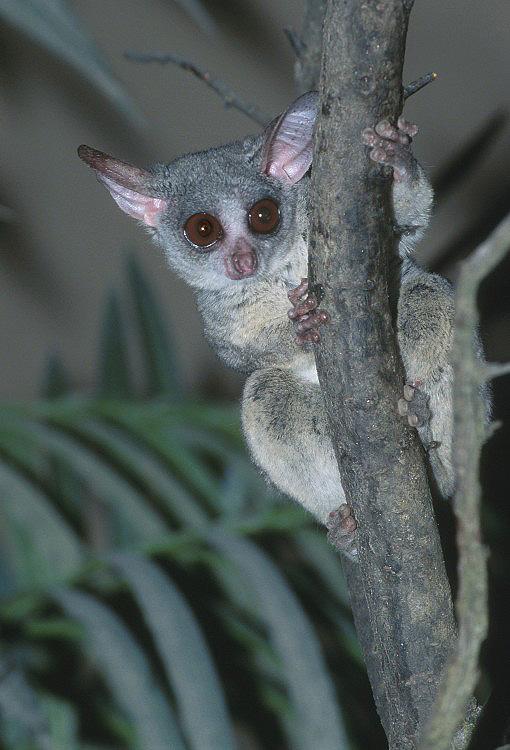What do I look like?
Typically, Galago senegalensis is found in rainforest habitats. It is a mobile animal with four legs. On each foot, the bush baby has flat disks and thickened skin. This helps them in the environments in which they typically live, which can be found on the habitat page of this website. The disks and toughened skin can aid the animal in climbing trees and grasping onto slippery or uneven surfaces which are usual in its habitat. Another helpful skill to accommodate the tree climbing habits of Galago senegalensis is that they can leap over 6 times their height (Aerts, 2013)! The structure that allows the high jumps is the size of the bones in their feet. The small bones that construct the base and midsection of the foot, the tarsus, are nearly one-third the length of the animal’s shin bone (Aerts, 2013). Also, bush babies have enlarged hind leg muscles, which give them the power behind the jump (Ballenger, 2001). Bush babies are relatives to another mammal that can leap incredibly; the lemur.
 Galago
senegalensis has thick, long, fleecy fur. The fur is typically brown,
with silver in it. The underbelly is usually a lighter combination of
the two colors. The bush baby has two giant ears which have four
transverse ridges (Ballenger, 2001). These ridges can fold at the same
time, or independently. Galagos have a fleshy, “second tongue”
underneath their regular tongue, which is used to aid them in grooming
(Ballenger, 2001).
Galago
senegalensis has thick, long, fleecy fur. The fur is typically brown,
with silver in it. The underbelly is usually a lighter combination of
the two colors. The bush baby has two giant ears which have four
transverse ridges (Ballenger, 2001). These ridges can fold at the same
time, or independently. Galagos have a fleshy, “second tongue”
underneath their regular tongue, which is used to aid them in grooming
(Ballenger, 2001).
Bush babies use sight, sound, touch, and chemical signals to communicate and navigate(Ballenger, 2001). They use scent marks to uniquely communicate with each other as well. They produce a scent from certain glands, and place the scent on surfaces, where other bush babies may sniff that scent and understand their signal (Ballenger, 2001). Just like humans, Galago senegalensis uses facial expression to convey emotions. A way to show possession of a territory for the bush baby is to urinate on its hands and walk around the land it possesses (Ballenger, 2001). This warns other animals that the area has been marked. Tactile communication, which is known as communication by touch (Rosenson, 1972), is most used by mother-offspring and mate duos. Again, that is much like human interaction. Humans do not use tactile communication on strangers, usually. Bush babies seem to have their own language. They use vocal communication by giving out alarm calls, which show fear and other emotions. The calls they use are very important and can often protect the animal from predation. Galago senegalensis nickname of “bush baby” comes from these calls. Can't get enough of the bush baby?! Visit this Animal Diversity Website for more information about your new furry friend!